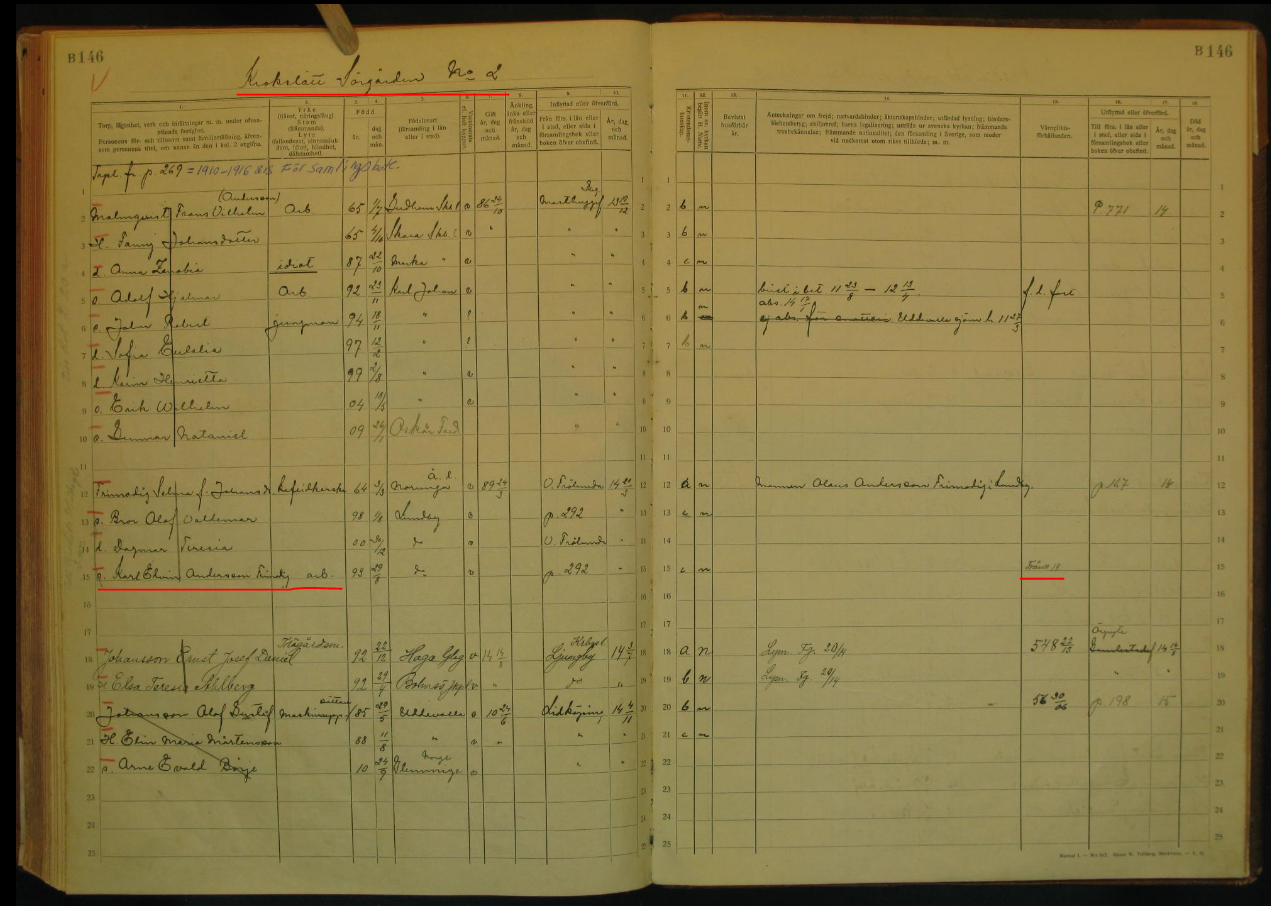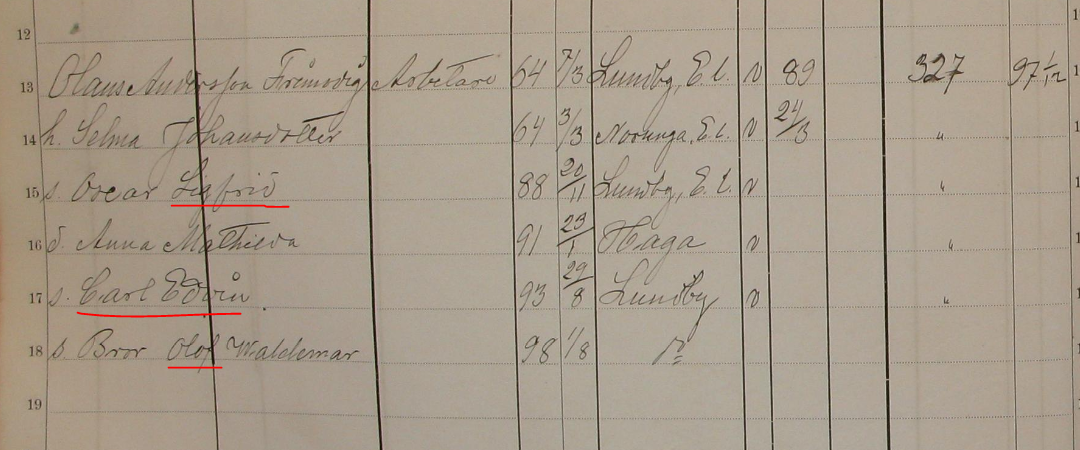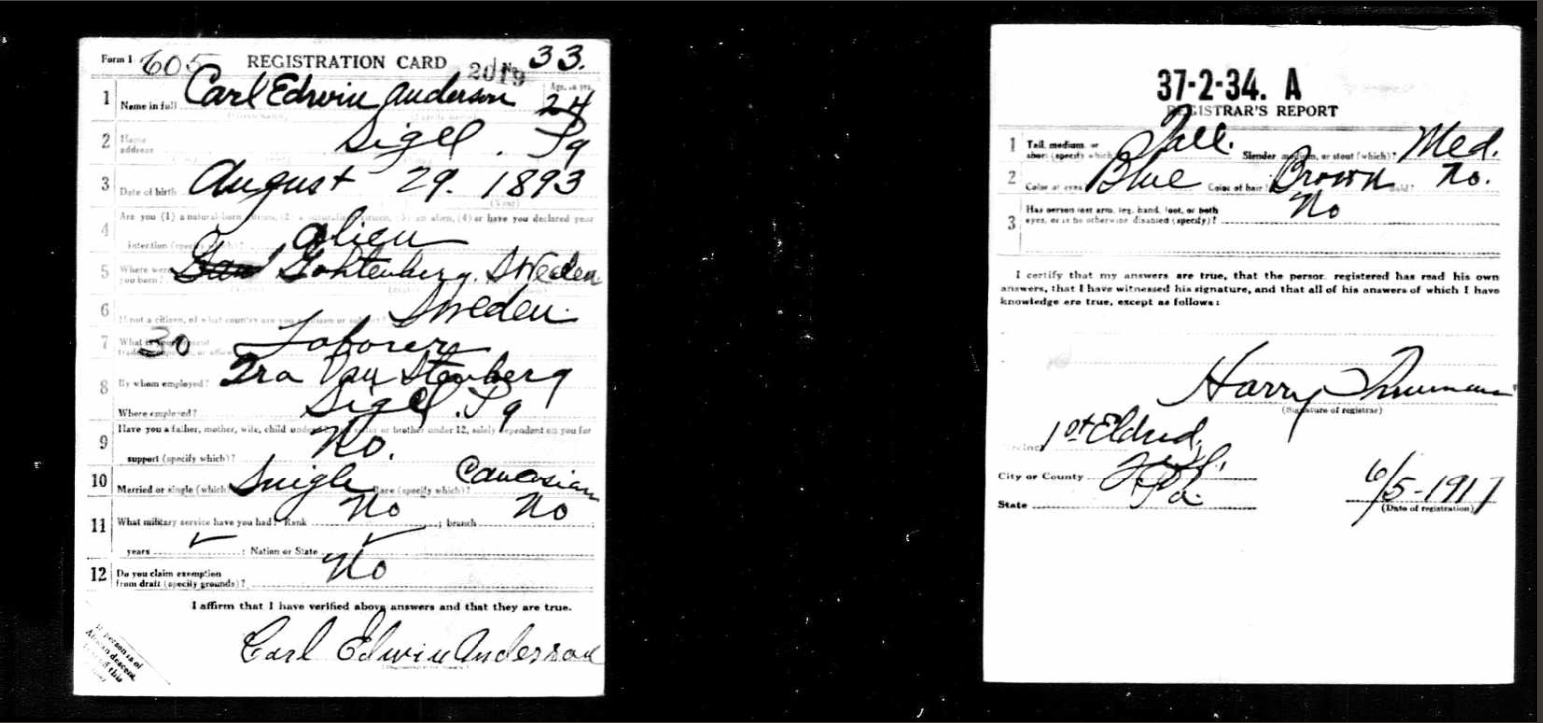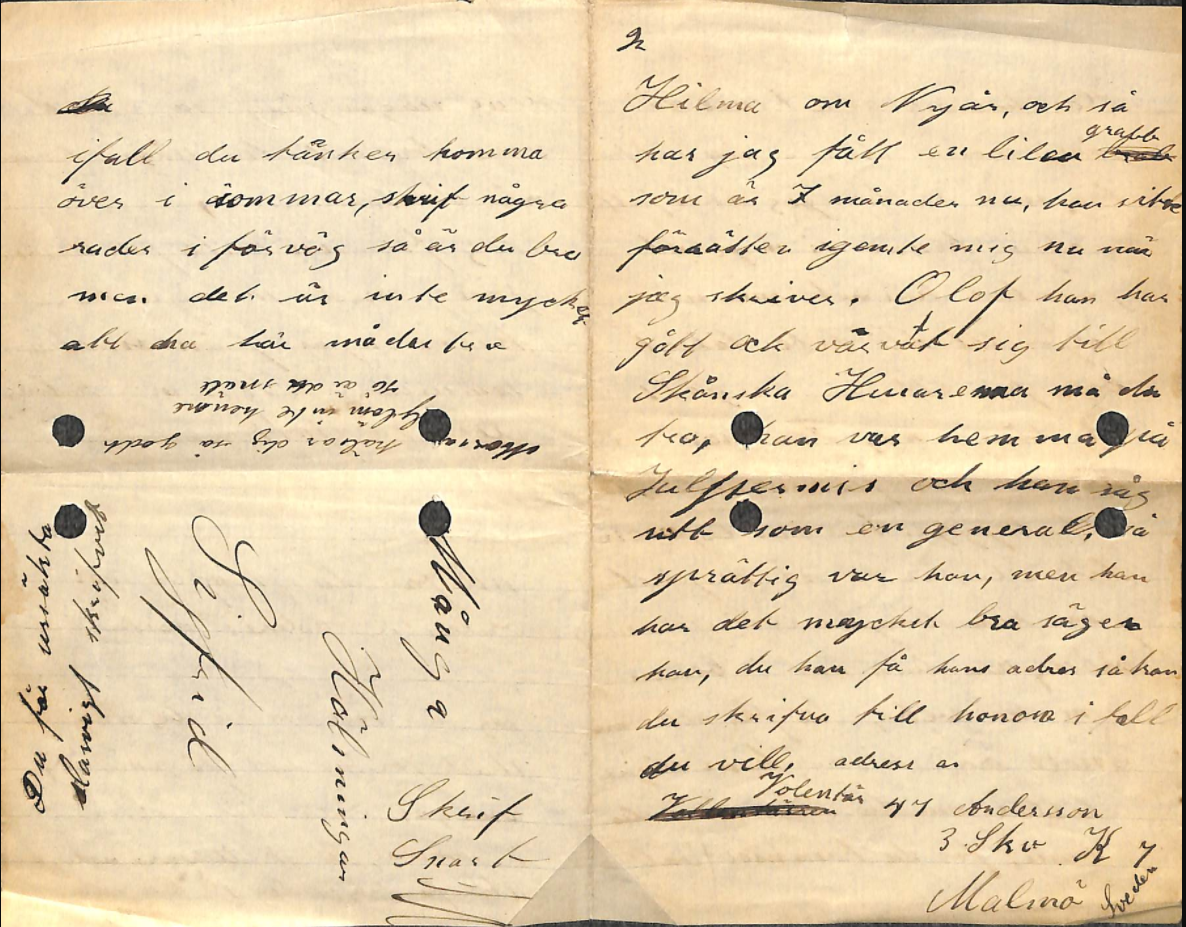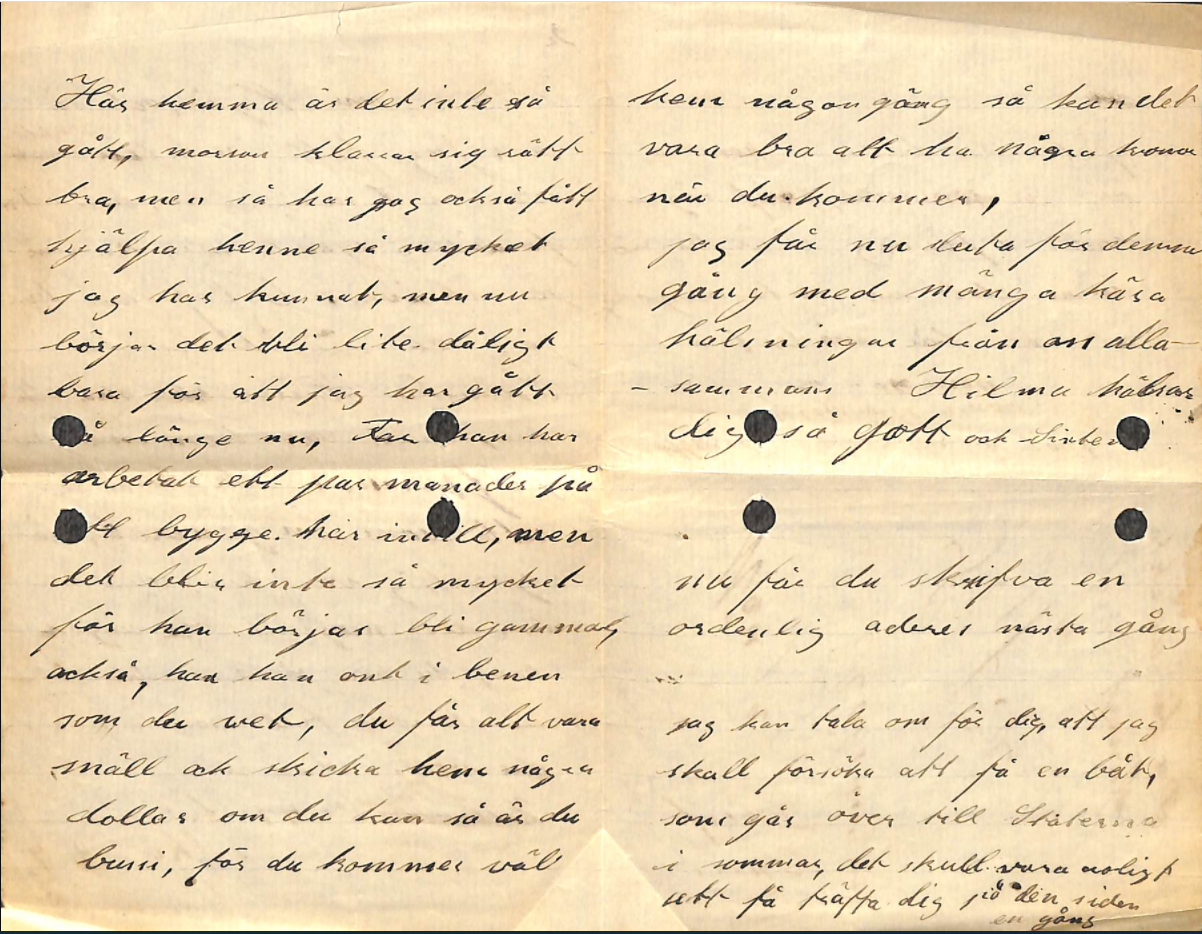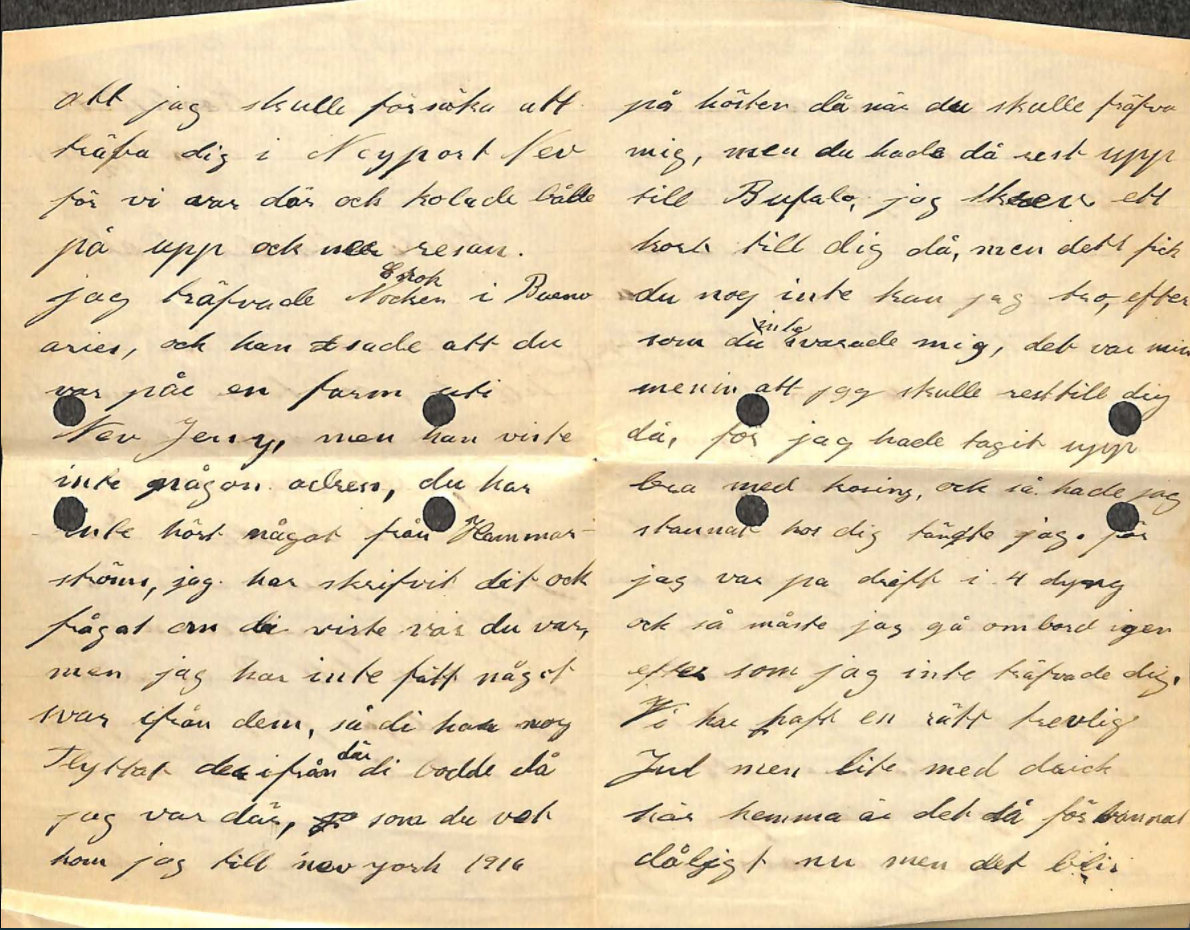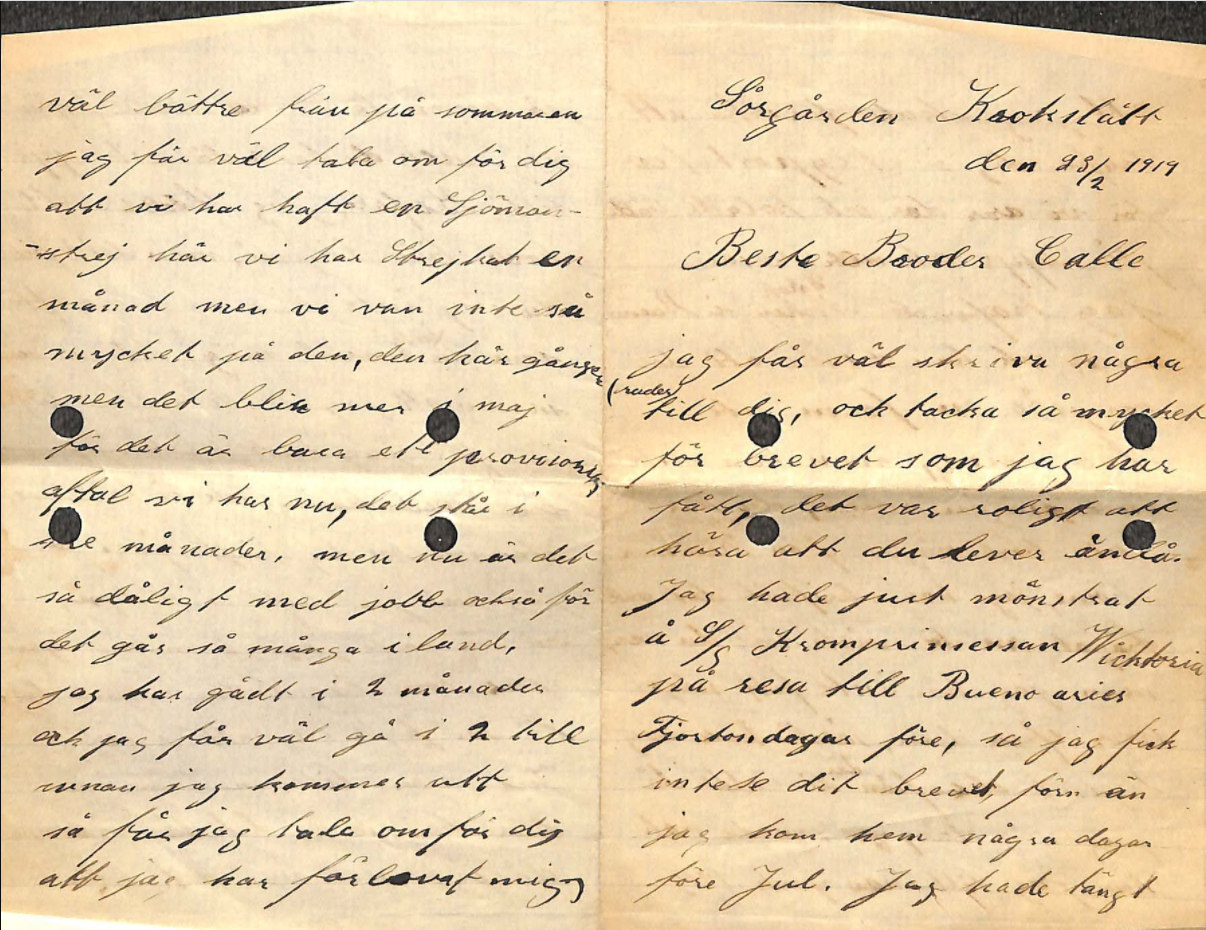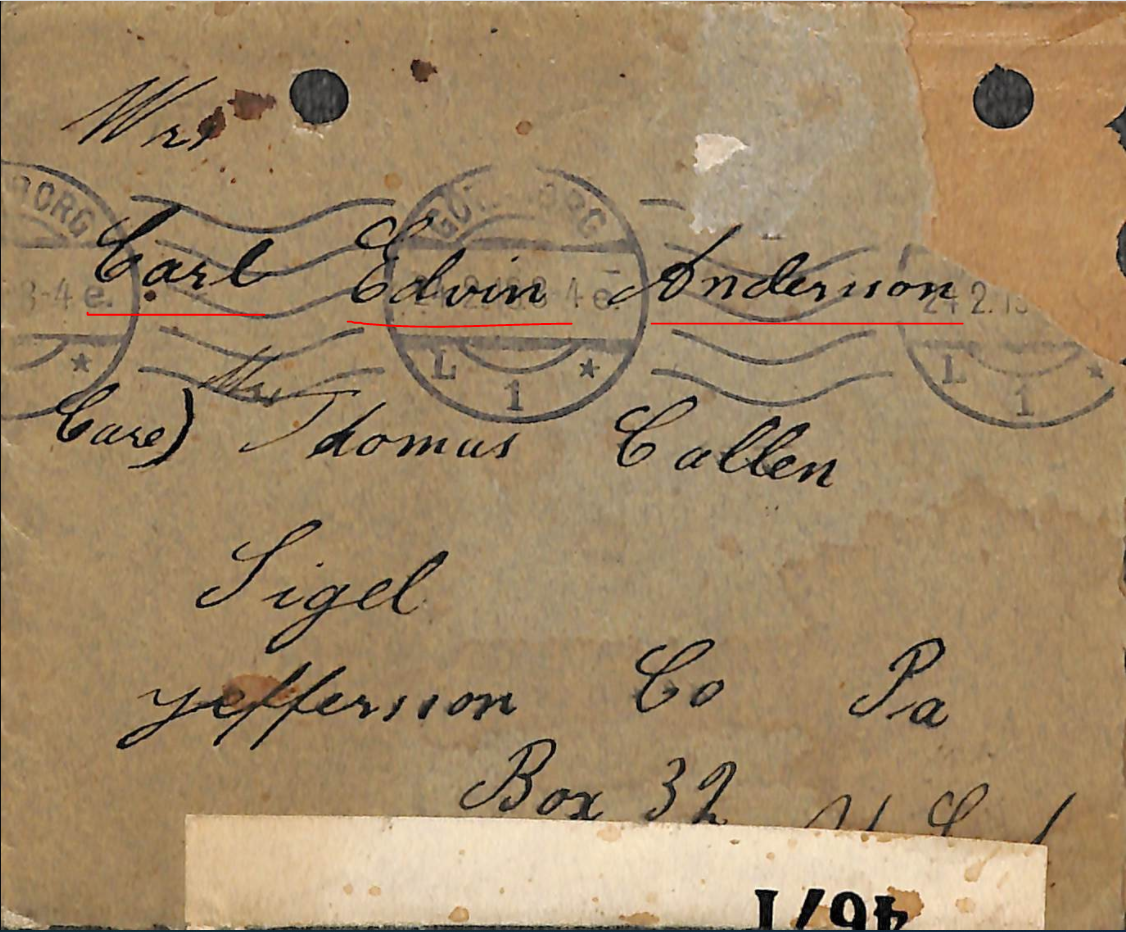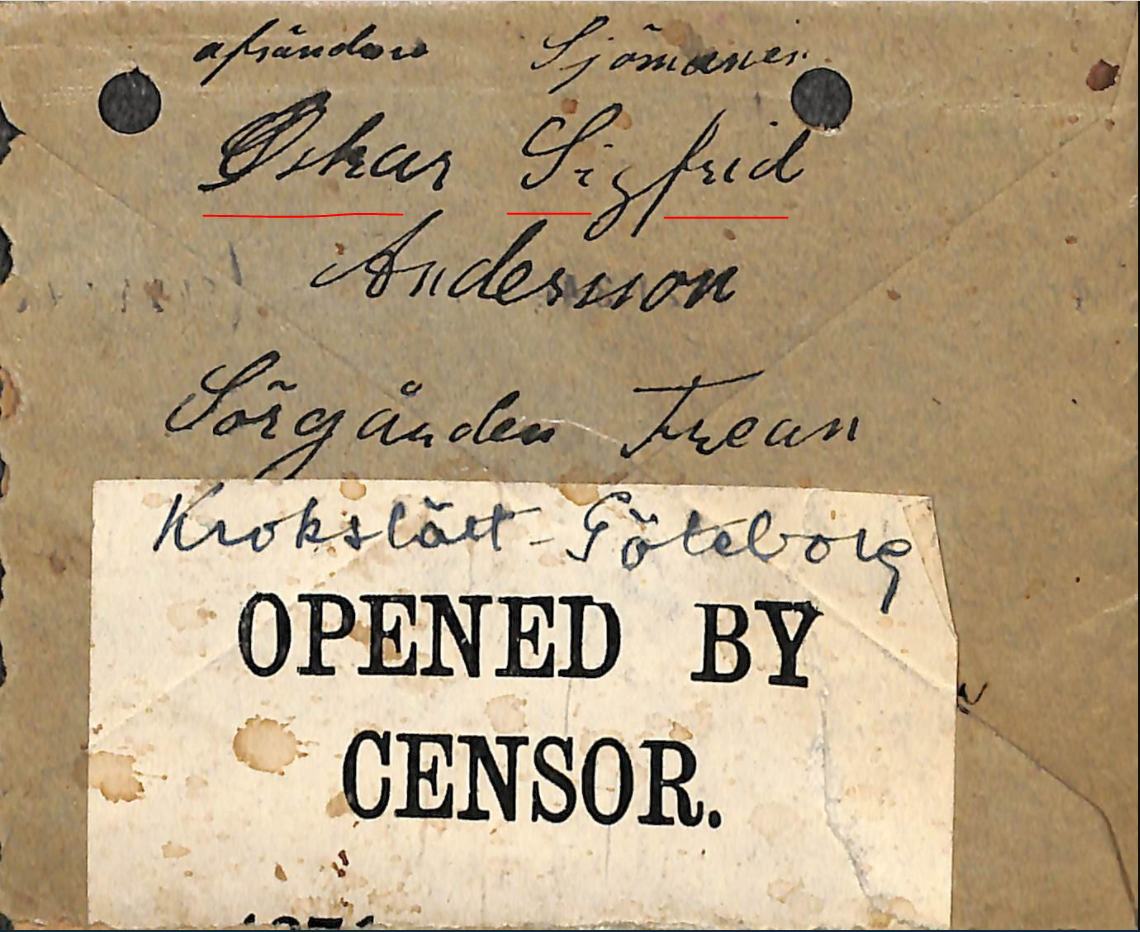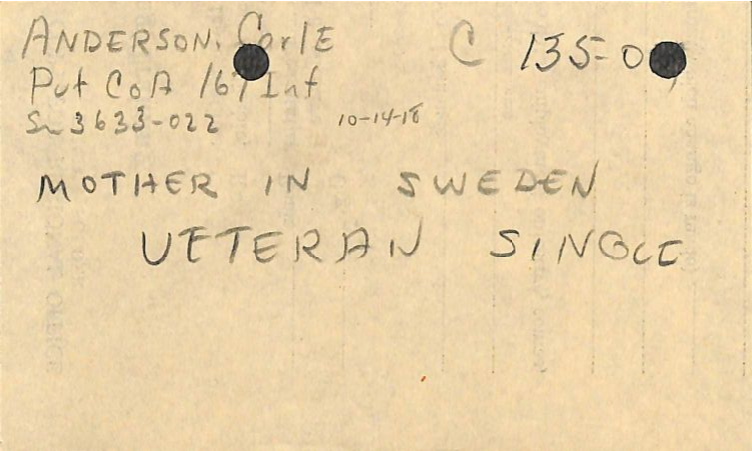The letter from the Oskar reached Carl a couple of months too late. The letters had many questions and wishes to meet again, but also some information about the situation back home in Sweden.
I find out that a soldier named Carl E Anderson in killed in action, but it was a bit of detective work again to really find out who he was and where he came from. Not much information to work with, and the names, Carl and Anderson, are among the most common names in Sweden, even today. But I found him, and also some other interesting facts.
In these times we know quite fast what is happening around the globe, within hours, sometimes within minutes. We have too much information sometimes. Imagine how it would be to not know exactly what is going on in the world all the time?
I am so impressed about the organisation when it comes to handle letters and post during the Great War. They took care of so much letters from the soldiers, we almost can’t imagine. I have read somewhere that the British post managed 11 bags of mail, daily, during a period in the war. Amazing.
I can order something today on internet, but I know I will have to wait almost a week nowadays, before I receive it. I know a friend who posted a package with a gps tracker, just to see where it went, before it came to the receiver, and he could follow the package heading to the central terminals in the country, quite far away, before it went back again after a couple of days, to the receiver, who just lived around 20 kilometers away.
Probably it took some time before the letters came to the correct receiver, and also it was probably a lot of letters and cards that never came through.
This was the case when it comes to the letter from Oskar, who he sent to Carl, who he thought was in North America, in February 23, 1919. He did not know that Carl actually was killed October 14th, 1918, in fights near Exermont in France, when he fought for the 167th Infantry Regiment, 42nd Division in American Expeditionary Forces.
I was not sure if I had found the correct Carl E Anderson, but after som research from different dates of birth and dates of death that was presented in different archives, I am now pretty sure that I have found the correct soldier.
He is, in some documents, stated to be born in August 25, 1893, and also that he he was killed both the 13th and 15th of October. The Casualty card above says 14th of October, and that is most likely the correct date. Below you will fins some documents from the Swedish church book that also says that he was born August 29th, 1893, which I also find in the draft from 1917.
Carl is born in Lundby parish, in Gothenburg, Sweden, 1893, as Carl Edvin Anderson Frimodig. I can read from the church books that his brother Oskar is mentioned as Oskar Sigfrid, and I also find the name on the envelope of the letter, and also in the letter, where he signed it with the name Sigfrid. From the church books I have not found any date about when Carl is leaving Sweden but he is noted “absent” in 1914-1917. In the letter Oskar also mention the other brother, Bror Olof Waldemar, with the name Olof.
This was one of the leads to, that I probably have found the right Carl. Below you will find some pictures from the letter. The letter is written in Swedish. In the letter Carl is called Calle, a very common way of calling people who has the name Carl, even today. Oskar is like Carl also a sailor. I think that is the way Carl came to North America, he probably went there with the ship he worked on, because I cant find other travel documents.
Above you can see the place, Sörgården, Krokslätt, and that is also mentioned in one of the church books, below, as a place where they lived in one period.
Some text from the letter that I translated:
“Thank you so much for your letter, is it good to hear that you are alive …” When Oscar is writing this letter, Carl is already dead, and buried at the initial burial site near Exermont, Ardennes, France.
“… You haven’t heard anything from Hammarström, I wrote them as well to ask them where you were, but I did not hear anything from them, probably they moved from the address where they lived then. As you know I came to New York 1916, in the autumn, when you were supposed to meet me, but you had travelled up to Buffalo, I wrote a card to you, but you did not answer as you did not receive it, I believe …”
“… It was meant that I would have been travelling to you, I had brought up a lot of cash, and if I had met you I thought I could have stayed by you, I was walking around for 4 days, but I had to go on the ship again as I did not meet you …”
“… It is quite bad here now (in Sweden) so you have to send home some dollars, that can be good to have when you are coming home again …”
“… I can tell you that I will try to get on a boat this summer, as it should be really fun to see you again!”
” … If you think you will come over this upcoming summer, just write us a letter in advance, so we know that you are coming.”
The letter itself is really interesting, and I found it in the US archive together with some other documents below, that tells us when Carl was moved from his first burial to The Meuse Argonne American cemetery, which is his final resting place today.
I hope that I one day can visit the place of Carl’s final resting place, and also the first burial site that he was in, after he fell that day, during the Meuse Argonne offensive, togehter with his unit. The coordinates are mentioned on the casualty card.
The story above, and especially the letter, moved me a bit, and I so wonder how it felt for Oskar to finally be told that his brother actually died before he wrote that letter. Below you will find some notes from the Swedish death book and also a photo of his headstone.
May carl rest in peace.


